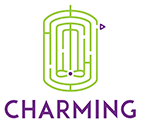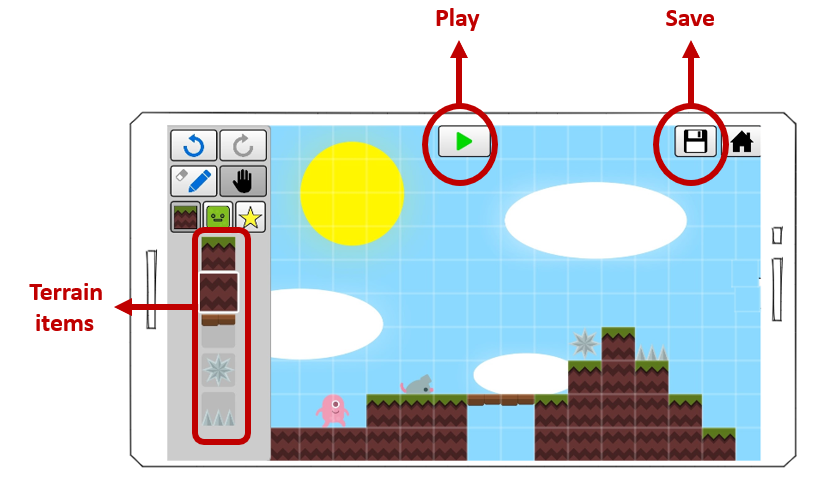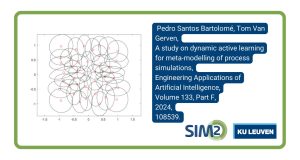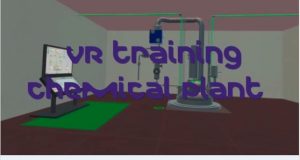In this article, I present the theoretical background and application of my PhD research that introduces game making as a learning strategy for STEM (Science, Technology, Engineering and Mathematics) areas. The main objective is to reinforce the understanding of theoretical concepts seen in class through a hands-on approach that facilitates a setting for reasoning, solving problems and interact with other peers.
In literature reviews about games for learning, it is not rare to read that using and creating games for educational purposes can be relatively complex and that numerous related case studies have shown disputed results. However, it is evident that the process of making games requires knowledge in the topic of the game under development. That is, for the creation of a digital game about chemistry, it is necessary to know and understand not only how digital games are produced, but also the chemical concepts to be used.
For my PhD research, chemical engineering students take on the role of game level designers with the mission to use their expertise in chemical engineering to create game levels. Whether the creations are well designed or not is irrelevant, since learning occurs in a constructivist setting through the creation process by reflecting with their peers on how the content can be projected. How to organise and guide this educational strategy, which tools are required, and which effects this practice implies are core parts of the research.
Making games for learning can be categorised as part of the Maker Movement (Hatch, 2014; Martin, 2015), an extension of the DIY (do-it-yourself) social trend (Schad and Jones, 2020) that consists of creatively designing and building material or digital artifacts for both playful and useful ends (Martin, 2015, p. 1; Schad and Jones, 2020, p. 66).
Research suggests (Kafai et al., 2014; Tofel-Grehl et al., 2017; Burton et al., 2018) that maker-centred learning can attract learners to STEM subjects (Lacey, 2010; Martin, 2015; Schad and Jones, 2020) because it provides an environment that reinforces the understanding of the theory learnt in class. An example is illustrated by a mission to Mars project (Burton et al., 2018), through which students actualize mathematical principles in the production of a rocket (Burton et al., 2018; Schad and Jones, 2020).
My study intends to benefit from some of the core values of the Maker Movement for educational purposes, which reach beyond creating an artifact. They also involve learning through the experience, using appropriate tools, sharing with the community and encouraging a playful approach to foster creativity.
That said, this study’s learning process occurs during a game jam event (Fig.1). A game jam is a hackathon-like event to create games in a relatively short period of time, i.e. from two to three days (Kultima, 2015). Such an intense activity of creation is increasingly attracting the attention of educational scientists interested in maker-centred learning (Meriläinen, 2020).
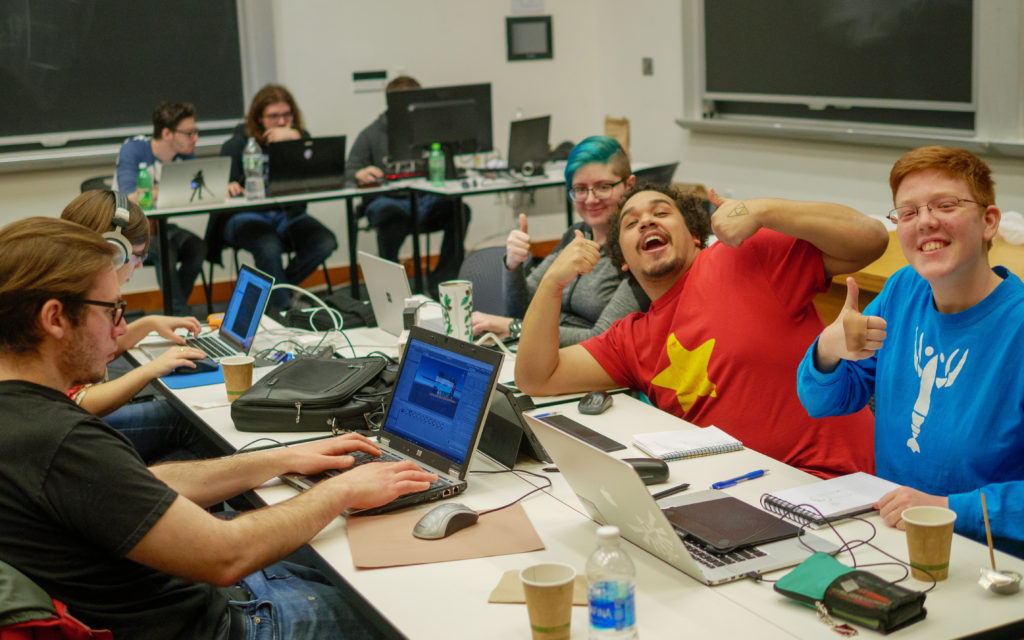
Fig. 1: Participants in the Global Game Jam (GGJ) in 2019
I have observed overlaps between game jam events and makerspaces. In both cases, students use tools to creatively make projects while being engaged in a setting which supports their curiosity, test their problem-solving skills, and allows them to interact with others (Schad and Jones, 2020). Nevertheless, makerspaces and game jams do not completely align. On one hand, the Maker Movement is an activity of empowerment driven by a social interest. Game jams, on the other hand, arose as a competition in an informal setting for fun.
The game jam introduced by this study is called CHEM Jam, since it is addressed to chemical engineering students. Participants attend a game level design workshop, and, after that, they create levels of a digital game. The informal setting encourages social interaction, which is the only means through which learning can occur according to Lev Vygotsky’s social constructivism (Vygotsky, 1978). Vygotsky argues that knowledge and understanding are constructed through a communicative act and interaction with others (Vygotsky, 1978; Audrey & Riley, 2018, p. 56-68).
Seymour Papert led one of the first initiatives to use computers as educational tools for children with his LOGO programming language in 1967. The trend evolved into visual tools, like Resnick’s Scratch in present days, through which infants can compose digital creations intuitively. This kind of resources are used for learning-through-doing specifically with technology, which has emerged in informal environments for primary and secondary schools in the last decade (Weitze, 2018).
Technology is an essential aspect of this research since learners are creating a digital game. However, making digital games involves knowledge in game design, game development and programming that chemical engineering students usually do not possess. The CHEM Jam event includes a game level design workshop with the basics of game level design. In addition, a custom-made game level editor, which will be created for this study, will allow creating digital game levels without developing and programming skills.
For the custom-made editor, 2D side-scrolling platform game editors based on drag-and-drop blocks or game items, such as Nintendo’s Super Mario Maker 2 or the mobile application Level Editor for Platformers (Fig. 2), are taken as initial source of inspiration. I have chosen a platform game genre due to the genre’s mainstream appeal, especially when it comes to game level editors as per my own experience. Participants may be more inclined to work on a game genre and a level creation tool that they are familiar with.
Fig. 2: Creation screen in Felgo’s Level Editor for Platformers.
Learning by making can promote diversity and equity (Schad and Jones, 2020, p. 72), which has been inspired by Papert’s work (Papert, 1991). In fact, recent research of digital fabrication (Lorenzo and Lorenzo, 2019) found promising results to promote inclusive initiatives in Higher Education. Lorenzo and Lorenzo’s study presents a maker-centred educational approach that could contribute to the inclusion of young people in vulnerable social environments, as well as students with disabilities and learning difficulties in Higher Education (Lorenzo and Lorenzo, 2019).
The truth is that activities traditionally practised by specific communities can be brought to a wider audience through makerspaces. An example is the creation of e-textiles in public schools because it is traditionally perceived as a female task (Kafai et al., 2014). Likewise, game jams, which are commonly practised by computer scientists, game designers, digital artists or game enthusiasts, could be accessible to people with other interests through a CHEM Jam event.
Ludography
-Level Editor for Platformers (Felgo, 2016)
-Super Mario Maker 2 (Nintendo, 2019).
Bibliography
-Aubrey, K. and Riley, A. (2018) Understanding and using educational theories. 2nd edn. London, England: SAGE Publications.
-Burton, B., Ogden, K., Walker, B., Bledsoe, L., & Hardage, L. (2018). Mars mission specialist: An integrated pay- load design challenge provides an authentic maker experience. Science & Children, 55(7), 46–54.
-Hatch, M. (2014) ‘The maker movement manifesto: Rules for innovation in the new world of crafters, hackers, and tinkerers’. New York, NY, USA: McGraw-Hill Professional.
-Kafai, Y. B., Fields, D., & Searle, K. (2014). Electronic textiles as disruptive designs: Supporting and challenging maker activities in schools. Harvard Educational Review, 84(4), 532–556. doi:10.17763/haer.84.4. 46m7372370214783
-Kultima, K. (2015) ‘Defining Game Jam’, in Foundations of Digital Games Proceedings 2015.
-Lorenzo, C. and Lorenzo, E. (2019) ‘Enhancing social inclusion in higher education through open access to digital fabrication laboratories’, Journal of Information Technologies and Lifelong Learning, 2(2), pp. 82–87.
-Martin, L. (2015) ‘The promise of the maker movement for education’, Journal of pre-college engineering education research, 5(1). doi: 10.7771/2157-9288.1099.
-Meriläinen, M. et al. (2020) ‘Game jams for learning and teaching: A review’, International journal of game-based learning, 10(2), pp. 54–71.
-Papavlasopoulou, S., Giannakos, M. N. and Jaccheri, L. (2017) ‘Empirical studies on the Maker Movement, a promising approach to learning: A literature review’, Entertainment computing, 18, pp. 57–78.
-Papert, S. (1991). Situating constructionism. In S. Papert & I. Harel (Eds.), Constructionism (pp. 1–12). Cambridge, MA: MIT Press.
-Schad, M. and Jones, W. M. (2020) ‘The maker movement and education: A systematic review of the literature’, Journal of research on technology in education, 52(1), pp. 65–78.
-Tofel-Grehl, C., Fields, D., Searle, K., Maahs-Fladung, C., Feldon, D., Gu, G., & Sun, C. (2017). Electrifying engage- ment in middle school science class: Improving student interest through e-textiles. Journal of Science Education & Technology, 26(4), 406–417.
-Verenikina, Irina M.: Vygotsky in Twenty-First-Century research 2010, 16-25.
-Vygotsky, L. S. (1978) ‘Mind in society: Development of higher psychological processes’. Edited by M. Cole et al. London: Harvard University Press.
-Weitze, C. L. (2018) ‘Learning and design processes in a gamified learning design: Students creating curriculum-based digital learning games’, in Games and Education. Brill, pp. 141–160.
